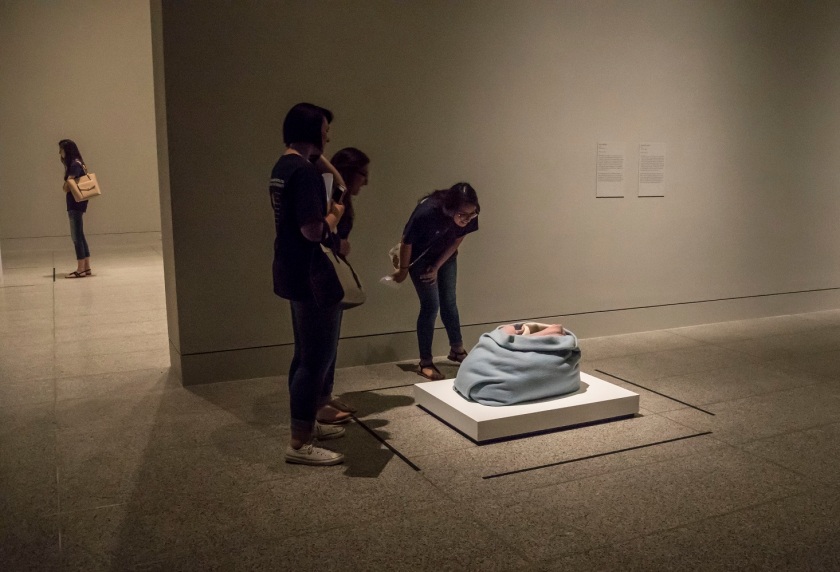The Museum of Fine Arts, by Karla Rosales
We began our tour of the museum with modern art by James Turrell. We entered the Wilson Tunnel and immediately recognized Turrell’s focus on light in his artwork.

But with limited time, we stuck with art since 1850, beginning with works by Monet, Van Gogh, and their contemporaries. We recognized how they used color and form to depict reality in a from alluding to abstraction.
Next, we learned about pointillism art which, somewhat similar to impressionism. Pointillism uses dots of different colors to create an image. We were able to appreciate a more developed form of abstract art with cubism. While pointillism uses color to create its image, cubism uses shapes. The different shapes and colors create different illusions, seemingly showing multiple perspectives simultaneously.
In the modern section, we saw works by Georgia O’Keefe, Alexander Calder, and Jackson Pollock.

Finally, we moved on to the special exhibit: the hyper-realistic work of Ron Mueck.

We found his work to be somewhat bizarre or, as Betty Moody might say, wonderfully weird and intriguing. Throughout the exhibit we found various sculptures with different meanings. For example, when you first see this piece…

…you expect to see a baby in the swaddling. But the title, “The Man in a Blanket,” hints that it is actually a middle-aged man, curled into the fetal position, perhaps hiding from life.

Mueck plays with scale, making sculptures either abnormally large or small. We see average sized people every day, and he gives us something out of the ordinary.

Perhaps most poignant is a young male, peering into a mirror at his reflection…

…with all the questions that young people have about themselves, their future, and the world around them.
He also did a self-portrait, which served as the exhibit centerpiece.

At the beginning of the exhibit, they warn visitors that some nudity is shown, and they weren’t lying! This piece, titled “Man in a Boat,” features a fully nude male, and captured the attention of some of our LEAPsters…

(The warnings were probably more directed at a subsequent piece not pictured here.)
Mueck also explores the idea of sacrifice, depicting a young African-American male as a victim of violence and a large fowl, hanged upside down in a variation on the crucifixion scene.

The final and largest sculpture was found at the end of the exhibit; it was a very large newborn baby girl. This work was one of the larger pieces, signifying the great blessing of a new born child.

When we completed viewing–and reflecting on–the exhibit, we returned the way we came. As before, we traversed Turrell’s tunnel, but it had changed colors…

…and this was appropriate, we thought, because we had changed, too.
